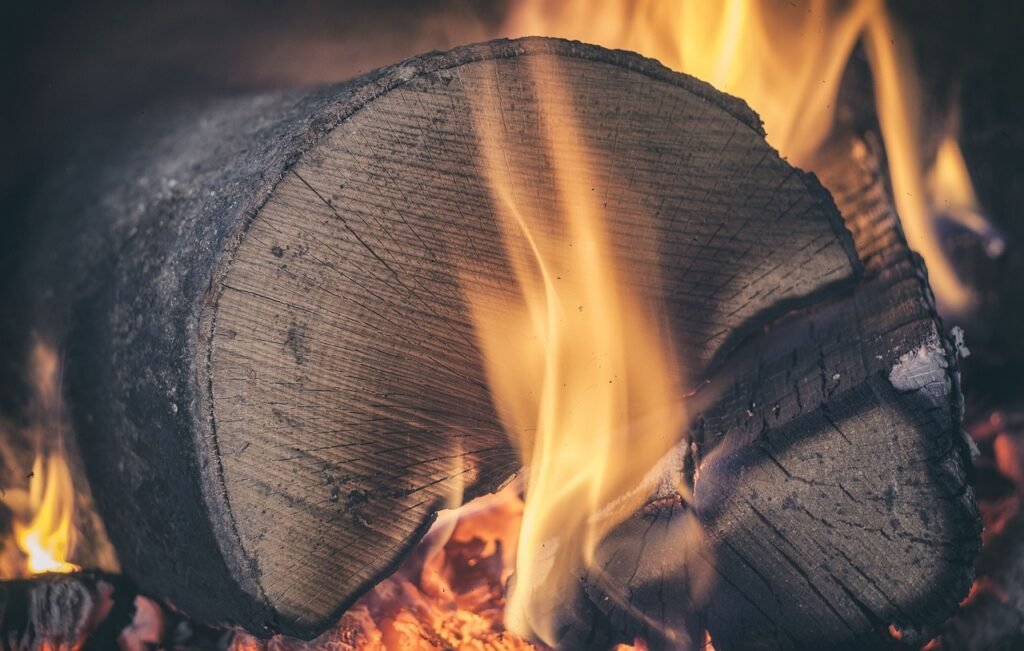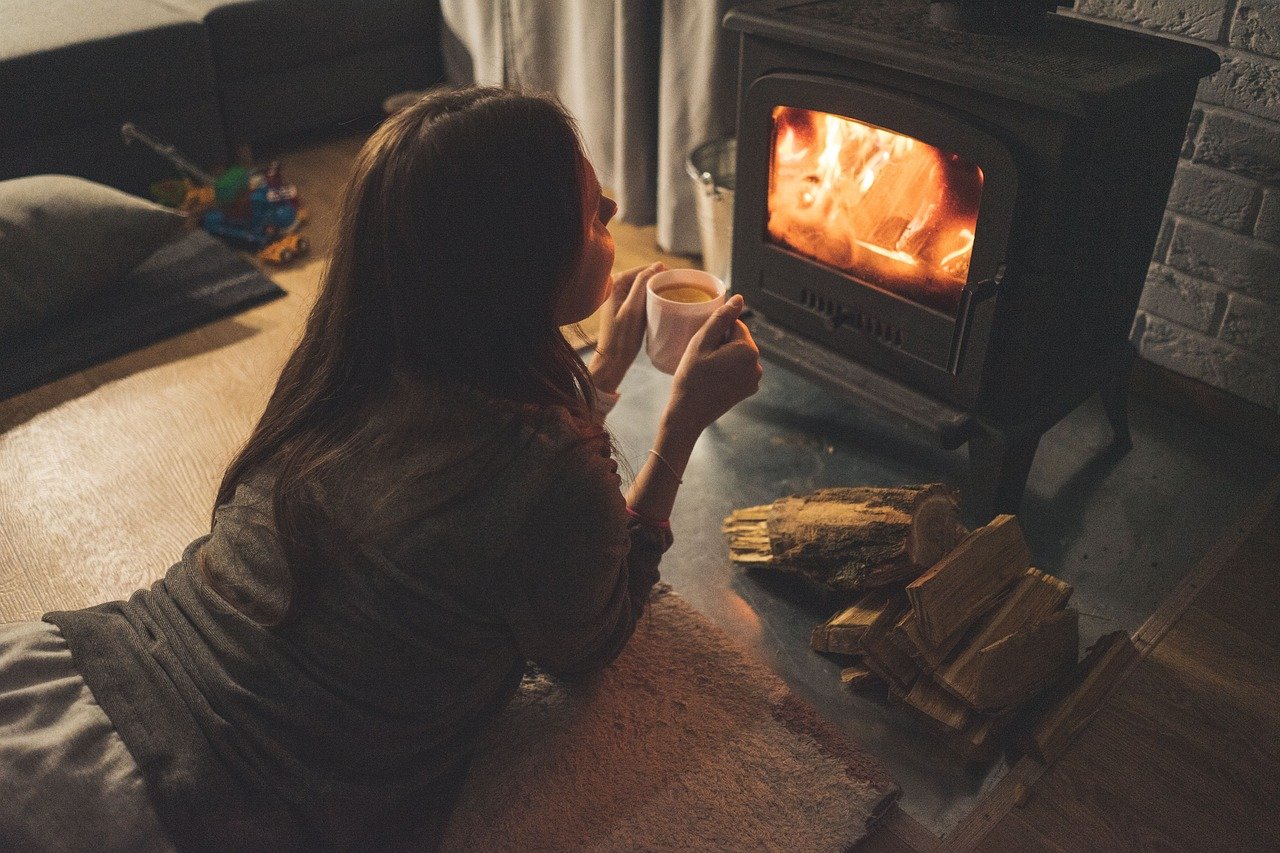Imagine transforming your living space into a cozy haven with a touch of rustic charm. In this article, we’ll guide you through the steps of creating a stunning rustic revival fireplace using reclaimed wood. Whether you’re a seasoned DIY enthusiast or new to the world of home projects, this project is perfect for adding warmth and character to any room. Get ready to roll up your sleeves and embark on a journey of creativity as we explore the wonders of reclaimed wood and its power to breathe new life into your home.
Choosing the Right Reclaimed Wood
When embarking on a project to create a rustic revival fireplace using reclaimed wood, the first step is to choose the right type of wood. Reclaimed wood comes in various species, each with its own unique characteristics, so it’s important to consider the overall look and feel that you want to achieve.
To determine the type of wood that best suits your project, take into account factors such as the color, grain pattern, and texture. For a more weathered and aged look, consider using reclaimed barn wood or salvaged oak. If you’re aiming for a lighter and more refined appearance, reclaimed pine or maple might be the ideal choice.
It’s also essential to ensure that the reclaimed wood you choose is authentic. To determine the authenticity, inspect the wood closely for signs of wear and tear, such as old nail holes or saw marks. These imperfections not only add character but also serve as proof of the wood’s reclaimed nature. Additionally, authentic reclaimed wood may feature subtle color variations and grain patterns that make it visually appealing and unique.
Preparing the Fireplace Area
Before you can start installing the reclaimed wood panels, it’s crucial to prepare the fireplace area properly. This involves measuring and marking the space where the panels will be installed and removing any existing materials that may interfere with the installation process.
To accurately measure and mark the space, use a tape measure to determine the dimensions of the fireplace area. Take into account the height, width, and depth of the space, as well as any architectural features or obstacles that may affect the installation. Marking the space with painter’s tape or chalk will help you visualize the final result and ensure that the panels are installed in the correct position.
Next, remove any existing materials that may be in the way, such as old tiles, drywall, or mantels. Use appropriate tools, such as a hammer, pry bar, or scraper, to carefully remove these materials without causing any damage to the underlying structure. It’s essential to create a clean and even surface to ensure a seamless installation of the reclaimed wood panels.

This image is property of pixabay.com.
Designing Your Rustic Fireplace
To create a truly unique and personalized rustic fireplace, you must put thought into the style and placement of the reclaimed wood panels. Consider the overall aesthetic of the room and how the fireplace will complement the existing decor. Whether you prefer a more traditional or contemporary look, the choice is yours.
Take into consideration where the focal point of the room will be and how the fireplace will contribute to it. For example, placing the reclaimed wood panels centered on the wall can create a stunning visual impact, while offsetting them to one side can add an element of asymmetry and artistic flair.
Creating a blueprint or sketch of your fireplace design can help you visualize the final result and make any necessary adjustments before proceeding with the installation. This step is particularly important if you plan to incorporate additional elements such as a mantel shelf or hearth.
Cleaning and Treating the Reclaimed Wood
Before installing the reclaimed wood panels, it’s vital to clean and treat them properly to ensure their longevity and maintain their appearance. Reclaimed wood often comes with dirt, dust, and other residues from its previous use, so thorough cleaning is necessary.
Start by removing dirt and dust using a soft-bristle brush or vacuum cleaner. Pay attention to all surfaces, crevices, and corners to ensure a comprehensive cleaning. If the wood is excessively dirty or stained, you may need to use a mild detergent mixed with water and a soft cloth to gently scrub away any stubborn residue.
After cleaning, it’s important to check the reclaimed wood for pests such as termites or wood-boring insects. Inspect the wood carefully, paying attention to any signs of infestation, such as small holes or sawdust. If any pests are present, it’s essential to treat the wood using appropriate methods or consult with a professional to ensure complete eradication.
To protect the reclaimed wood from moisture and other environmental factors, it’s recommended to apply a wood sealant or preservative. This will not only enhance the appearance of the wood but also prevent it from warping, cracking, or deteriorating over time. Follow the manufacturer’s instructions for applying the sealant, and ensure that the wood is fully dry before proceeding with the installation.

This image is property of pixabay.com.
Installing the Reclaimed Wood Panels
Installing reclaimed wood panels can be a rewarding and enjoyable process. However, it’s crucial to take certain steps to ensure a successful installation that will stand the test of time.
Start by cutting and sanding the panels to the desired dimensions and smoothness. If you’re using reclaimed barn wood or salvaged timber, you may need to remove any protruding nails or other hardware before cutting. Use a circular saw or a miter saw to make precise cuts, and a sander or sandpaper to achieve a smooth finish.
Attaching the panels to the fireplace will depend on the specific design and construction of your fireplace. It’s essential to use appropriate hardware, such as screws or nails, that are compatible with the reclaimed wood and suitable for securing it to the underlying structure. Be mindful of the location of any studs or support beams, as these will provide the necessary stability for the panels.
Working with uneven surfaces can present a unique challenge when installing reclaimed wood panels. It’s important to ensure that the panels are leveled and aligned properly to create a seamless and visually appealing result. If the surface is significantly uneven, you may need to use shims or additional support to achieve the desired outcome.
Adding Functional Elements
A rustic fireplace is not just about the reclaimed wood panels; it’s also important to incorporate functional elements that enhance both the aesthetics and functionality of the space. Consider adding a mantel shelf, which can serve as a focal point for displaying decorative items or providing a place to showcase artwork.
Additionally, incorporating a hearth or bench can create a cozy and inviting atmosphere. A hearth not only adds a layer of authenticity to your rustic fireplace but also provides a practical space to store firewood or display decorative accessories. A bench can serve as extra seating or a place to relax and enjoy the warmth of the fire.
When adding these functional elements, ensure that they complement the overall design of the fireplace and are proportionate to the space. Take into consideration the height, width, and depth of the mantel shelf, hearth, or bench to ensure a cohesive and harmonious appearance.

This image is property of pixabay.com.
Enhancing the Look with Decorative Elements
To elevate the rustic aesthetic of your reclaimed wood fireplace, consider incorporating decorative elements that add visual interest and depth to the space. Faux or realistic logs can be installed inside the fireplace to create the illusion of a real fire. These logs come in various sizes and styles, allowing you to choose the one that best suits your desired look.
Adding stone or brick accents to the fireplace area can also enhance the rustic appeal. Whether you opt for natural stone veneer or reclaimed brick, these materials provide texture and character that complement the reclaimed wood panels. When installing stone or brick accents, pay attention to the color scheme and ensure that they blend harmoniously with the overall design.
Rustic lighting fixtures can further enhance the ambiance of your reclaimed wood fireplace. Consider installing wall sconces or pendant lights that feature wrought iron, antique finishes, or other rustic elements. These fixtures not only provide functional lighting but also create a warm and inviting atmosphere that complements the rustic aesthetic.
Finishing Touches
To complete the transformation of your fireplace and ensure its durability, applying the right finishes is essential. Staining or painting the reclaimed wood can add depth, richness, and an overall polished look to the fireplace. Choose a stain or paint color that complements the surrounding decor and creates the desired ambiance.
After staining or painting, it’s important to apply a protective finish, such as polyurethane or a clear coat. This will help seal the wood, protect it from daily wear and tear, and enhance its natural beauty. Follow the manufacturer’s instructions for the application process and ensure that the wood is fully dry before adding any decorative accessories.
To add the final decorative touches to your reclaimed wood fireplace, consider incorporating accessories such as a decorative mantel clock, vintage-style mirrors, or artwork that complements the rustic aesthetic. These accessories can help personalize the space and make it a true focal point of your room.
Maintenance and Care
Just like any other element in your home, a reclaimed wood fireplace requires regular cleaning and maintenance to keep it looking its best. Periodically dusting the wood surfaces with a soft cloth or duster will help remove any dirt or debris that may accumulate over time. Pay attention to any hard-to-reach areas or crevices to ensure a comprehensive cleaning.
Additionally, it’s important to check the reclaimed wood panels for any signs of wear and tear. Inspect them for any cracks, splits, or other damage that may require repair or replacement. Addressing these issues promptly will help maintain the overall integrity and appearance of your fireplace.
Safety Considerations
When working with a fireplace, safety should always be a top priority. It’s crucial to install fireproof materials around the fireplace area to prevent any risk of fire. These materials can include fire-resistant drywall, non-combustible tiles, or refractory panels, depending on the specific requirements of your fireplace design.
Proper ventilation is also essential to ensure the safe operation of your fireplace. Ensure that there is sufficient airflow in the room to prevent the buildup of smoke or carbon monoxide. If necessary, consult with a professional to assess the ventilation requirements and install the appropriate system.
By following these safety considerations, you can enjoy the warmth and beauty of your reclaimed wood fireplace with peace of mind. Remember to always prioritize safety and adhere to local building codes and regulations to ensure a safe and compliant installation.
In conclusion, creating a rustic revival fireplace using reclaimed wood is a rewarding and creative project. By carefully choosing the right wood, preparing the fireplace area, and designing the layout, you can transform your space into a cozy and inviting haven. With proper cleaning, treatment, and installation, your reclaimed wood fireplace will become a stunning focal point that adds charm and character to your home. So roll up your sleeves, get creative, and embark on your DIY journey to crafting the perfect rustic fireplace using reclaimed wood!




